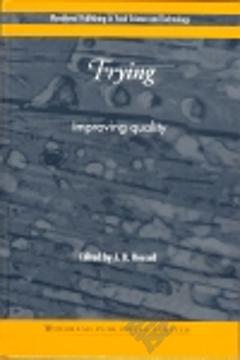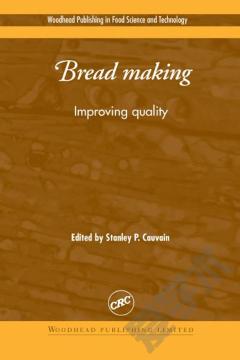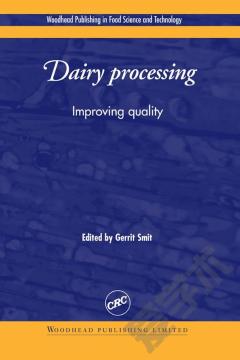Improving Concrete Quality
How Good Is Your Quality? Costs Due to Poor Quality Why Is It So Important to Lower Standard Deviation? Is It Worthwhile Not to Invest in Improved Quality under Certain Circumstances? 2010 NRMCA Quality Measurement and Bench Marking Survey How Can a Concrete Producer Improve Quality? Variation in Concrete Strength Due to Cement Cement from a Given Source Varies between Shipments ASTM C917 How Should a Ready Mixed Concrete Producer Use ASTM C917? Cement Choice Better Understand Concrete Variability and Lower It! Reduce Low-Strength Problems and Optimize Mixture Proportions Troubleshoot Low-Strength Problems How Should a Cement Producer Use ASTM C917? Summary Variation in Concrete Strength Due to Water and Air Content Variation Mixing Water Content Variation and Its Effect on Compressive Strength Variation Air Content Variation and Its Effect on Strength Variation Combined Effect of Water and Air Content Variation on Strength Variation Discussion Summary Mixing-Water Control Sources of Water Washwater in Truck Mixer Drum from Previous Load Batchwater Free Water from Aggregates Water Added at Slump Rack Water Added at Job Site Variations in Mixing-Water Demand Effect of Mixing-Water Content, Mixing-Water Demand on Measured Slump Plant Tests for Quality Assurance Summary Variation in Concrete Strength and Air Content Due to Fly Ash Variability of Fly Ash Shipments from Given Source Air Entrainment Strength Activity Fly Ash Testing Required by ASTM C311 and C618 Suggested Producer Actions Air Entrainment Strength Activity Index Other Tests Summary of Suggested Producer Actions Variation in Concrete Performance Due to Aggregates Variability of Aggregate from Single Source Aggregate Properties and Their Effect on Concrete Mixture Proportioning and Performance Relative Density and Absorption of Aggregate Aggregate Moisture Content Void Content in Coarse Aggregates Void Content of Fine Aggregates Aggregate Grading Material Finer than 75 mum (No 200) Sand Equivalency Using Aggregate Test Results Table 6.1 Test Results Table 6.2 Test Results-Tests Conducted by the Aggregate Producer Table 6.2 Test Results-Tests conducted by Concrete Producer Basic Statistics Basic Statistical Parameters Variability Frequency Distributions Normal Distribution Predictions Using a Normal Distribution Types of Variation Common Causes and Special Causes Step Changes Control Charts Individual Chart Average and Range Charts Moving Average and Moving Range Charts CUSUM Charts Example Variation in Concrete Performance Due to Batching ASTM C94 Scale Accuracy and Accuracy of Plant Batching Two Issues with Batching Over-Batching Variation of Batch Weights and Its Effects Cementitious Weight Variation and Its Effect on Strength Variation How Can a Company Improve Batching Accuracy? Yield Measurements-A Tool to Improve Batching Accuracy Summary Variation in Concrete Performance Due to Manufacturing ASTM C94 Requirements for Uniformity of Concrete Improving Uniformity of Concrete Produced in Truck Mixer Batching Sequence Mixing Revolutions Mixing Speed What Can a Company Do to Improve Uniformity of Concrete Produced in a Truck Mixer? Variation in Concrete Performance Due to Temperature Effect of Temperature on Setting Time Effect of Temperature on Early-Age Strength Effect of Temperature on Mixing-Water Demand Variation in Concrete Performance Due to Delivery Time Summary Variation in Concrete Performance Due to Testing A Measure of Testing Variability Other Methods of Evaluating Testing Other Property Measurements Producer Testing Rate of Strength Gain Cylinder Density Laboratory Reports ACI Code and Specification Requirements Related to Concrete Testing Steps to Improve the Quality of Acceptance Testing Education Round-Robin Testing Programs Incentives to Testing Technicians Preconstruction Conferences Other Strategies Summary Internal Concrete Testing Why Test at the Plant When We Can Get Job-Site Test Data? Criteria for Plant Testing Selection of Mixture Classes Sampling and Types of Testing Frequency of Testing Data Analysis Control Charts Slump Air Content Density Air-Free Density Temperature Compressive Strength CUSUM Charts Summary Using Job-Site Test Results for Improving Concrete Quality Acceptance Test Results Data Analysis Rejecting Outliers Control Charts Control Chart Limits Monitoring S of Compressive Strength CUSUM Charts Use of Control and CUSUM Charts to Analyze Project Test Data Project 1 Project 2 Project 3 Summary Impact of Specifications on Concrete Quality Allow Use of Standard Deviations Not Just over Designs Move from Prescriptive to Performance-Based Specifications Minimum Cementitious Content Maximum w/cm Changes to Mixture Proportions after Submittal Qualifications Producer Qualifications Installer and Testing Agency Qualifications Bonus-Penalty Provisions Job-Site Concrete Acceptance Testing Current information on Material Properties Summary Impact of Concrete Quality on Sustainability Target a Low Standard Deviation Better Job-Site Curing and Overall Testing Quality Mixture Optimization Fewer Returned Concrete and Hardened Concrete Issues Plant and Truck Mixer Maintenance Temperature Measurements Batching Accuracy and Yield Measurements Mixture Adjustments Summary Elements of a Quality Management System for a Concrete Producer Why Should a Company Have a QMS? What Are Elements of a QMS and How Does It Improve Quality? Quality Objectives and Measurement Management Commitment Customer Focus Personnel Qualifications Quality Manager Plant Operators Field Testing Technicians Laboratory Technicians Truck Mixer Operators Laboratory Testing Capabilities Aggregate Tests Concrete Tests Materials Management and Conformance Production Control Specification Review, Mixture Development, Optimization Receiving Orders and Record Keeping Testing Internal Testing at the Plant Internal Testing at the Job Site Quality Assurance Test Records Nonconforming Acceptance Test Results Identification/Traceability Quality Audit Returned Concrete and Washwater Summary Bibliography References Terminology Appendices Index
{{comment.content}}








 京公网安备 11010802027623号
京公网安备 11010802027623号